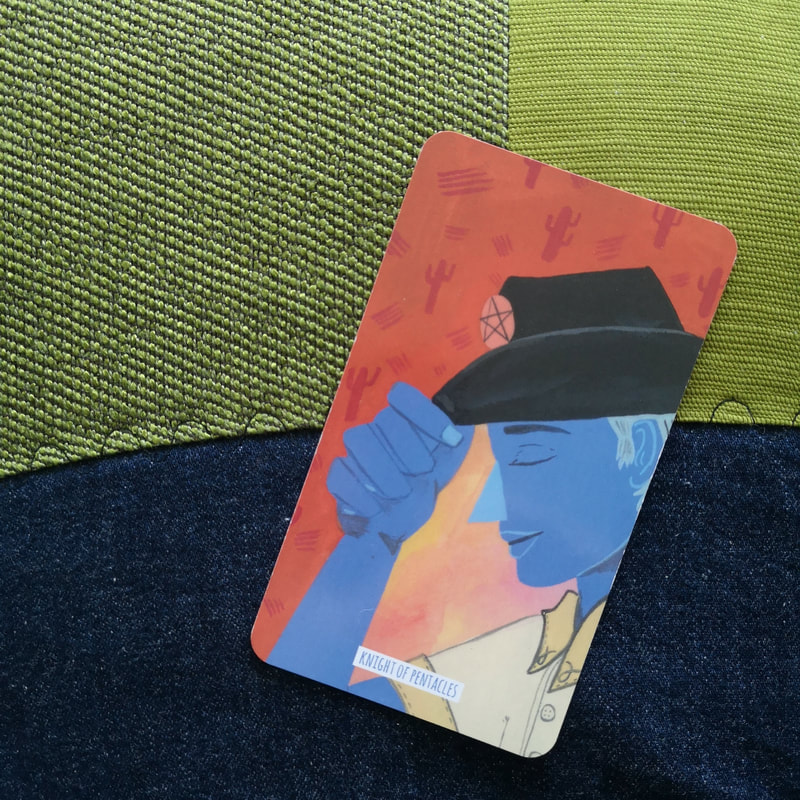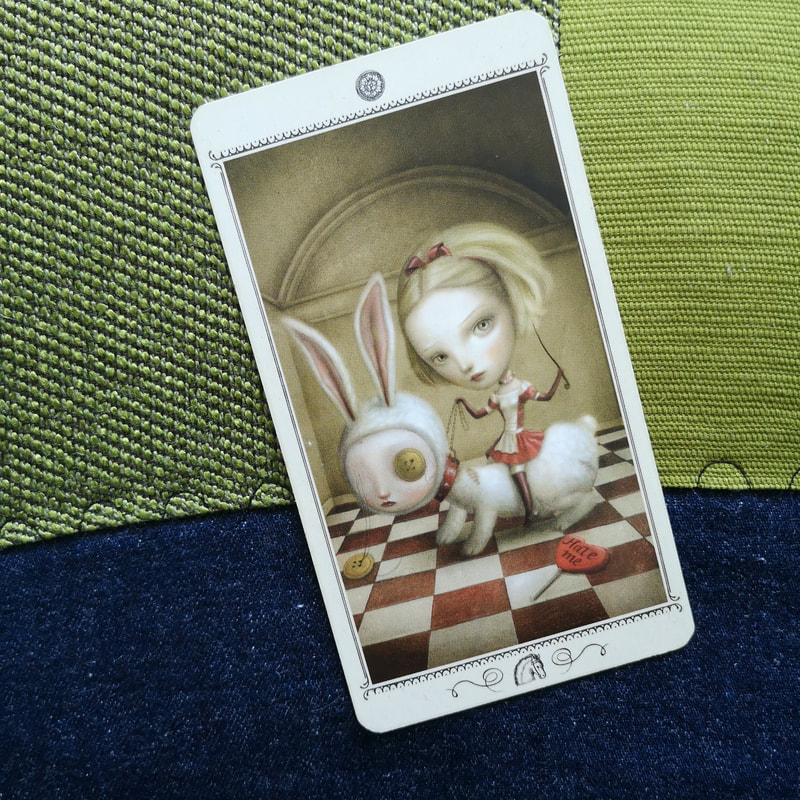|
I started reading tarot in the Spring of 2015, which was most definitely a Bad Time in my life – head full of deep, cakey mud that made it almost impossible for any wheels to turn. I stopped not long after. That’s why when people ask me when I started reading tarot, I usually say: December 2016. Because that’s when I really dedicated myself to it as a practice. One card I never really understood was the Knight of Pentacles. I have a notebook in which I jotted down thoughts regarding each card’s meaning. Most cards have elaborate flow charts and mind maps. The upright Knight of Cups page just read “hard work”… for over a year and a half. Seriously. Two words. I was fortunate enough to find The Creative Tarot by Jessa Crispin at my library last summer. In it, Crispin goes through every tarot card and illustrates it through famous artists or artworks, creativity-related anecdotes, etc. Bear in mind that this is most definitely not an introductory book; I would suggest a certain level of familiarity with the cards before reading this (i.e. being able to read each card comfortably with or without notes). It would not be hyperbolic to say that this author revolutionized my understanding of the Knight of Pentacles. It’s true. Of course, between “hard” and “work”, there wasn’t much to revolutionize, but still. Crispin relates the Knight of Pentacles to a particular number in The Rite of Spring, I think, or in The Afternoon of a Faun that had been produced a few months prior, I can’t remember. Point is: erotic ballet in the 1910s causing upheavals and controversy. Jessa Crispin also mentions ballet in the discussion of the Nine of Pentacles, saying that the Nine of Pentacles looks like a ballerina floating onstage, but that, like the case is for the ballerina, a whole lot of hard work went behind it. This is something that helps me understand the use of the erotic ballet metaphor with the Knight of Pentacles. Another thing that helps is the reminder that the Knight of Pentacles is earth (Pentacles) and fire (Knight). I got the Nicoletta Ceccoli deck in January 2017 and it is one of the two decks I am still using today (the second one being the Circo Tarot by Marisa de la Peña, which I got in August 2018). In that deck, the Knight of Pentacles is portrayed with a discarded heart-shaped sign on the ground on which the words “Hate me” can be read. I never understood the point of that sign until I read Crispin’s Knight of Pentacles chapter. I feel so moved when I think of the vulnerability in that “Hate me” sign. I think that sometimes we ask for hatred because we’re tired of asking for love and being met with indifference. When we get past this need to claim others’ hatred – the moment I think the card may be portraying – we are ready to dare in the most authentic way possible, not to get reactions, but because that is what we feel in our gut we must do. We’ll never know what Vaslav Nijinsky was trying to do with his erotic ballet, if he wanted to shock or if he was just going for the frankest form of expression he could imagine. Some people say The Rite of Spring was a publicity stunt, created entirely for its shock value; yet, others disagree. Did Stravinsky, Nijinsky and the others ask themselves “What is the most shocking thing I could make?” or “What is truest to the feeling and the vision I have inside?” Call me idealistic; I like to think it’s BOTH. Because I’ve felt that way. So huge and electric and intense inside and like nothing I can make will shock others enough to make them understand. I can relate to the need for the high-pitched bassoon tune, for the dissonance, for the confusing rhythms, for the weird melodies. I’ll never know if Igor Stravinsky wrote those elements in his music because there was no way for him to create anything that satisfied him otherwise, or because he just sat down at his desk and thought something like: “Alright, let’s shock these rich Parisians and get me a lot of press attention.” But I like to think there’s an element of honesty in The Rite of Spring, and for the sake of this post – discussing the Knight of Pentacles – let’s say there is. And so, I sense a duality in the Knight of Pentacles. On one hand, the training, the work, the physical care, repeating exercises over and over, bandaging our feet, showing up, buckling down. On the other hand, daring in the most authentic way possible. See you in the next one: the inevitability of death. Until then, I wish you the courage to channel your inner Knight of Pentacles.
1 Comment
9/3/2019 12:17:49 am
Tarot reading is something that I also want to learn. Well, I have a free class this semester, so I might just go out and read me some tarot. Of course, there are not a lot of school that teach tarot reading, but luckily, we have one here. If you also want to learn how to read tarot cards, then I invite you to our class. We do not really cost much either, you will have fun here, trust me.
Reply
Leave a Reply. |
the cluba small collective dedicated to personal, creative, and communal growths. Archives
January 2021
Categories
All
|




